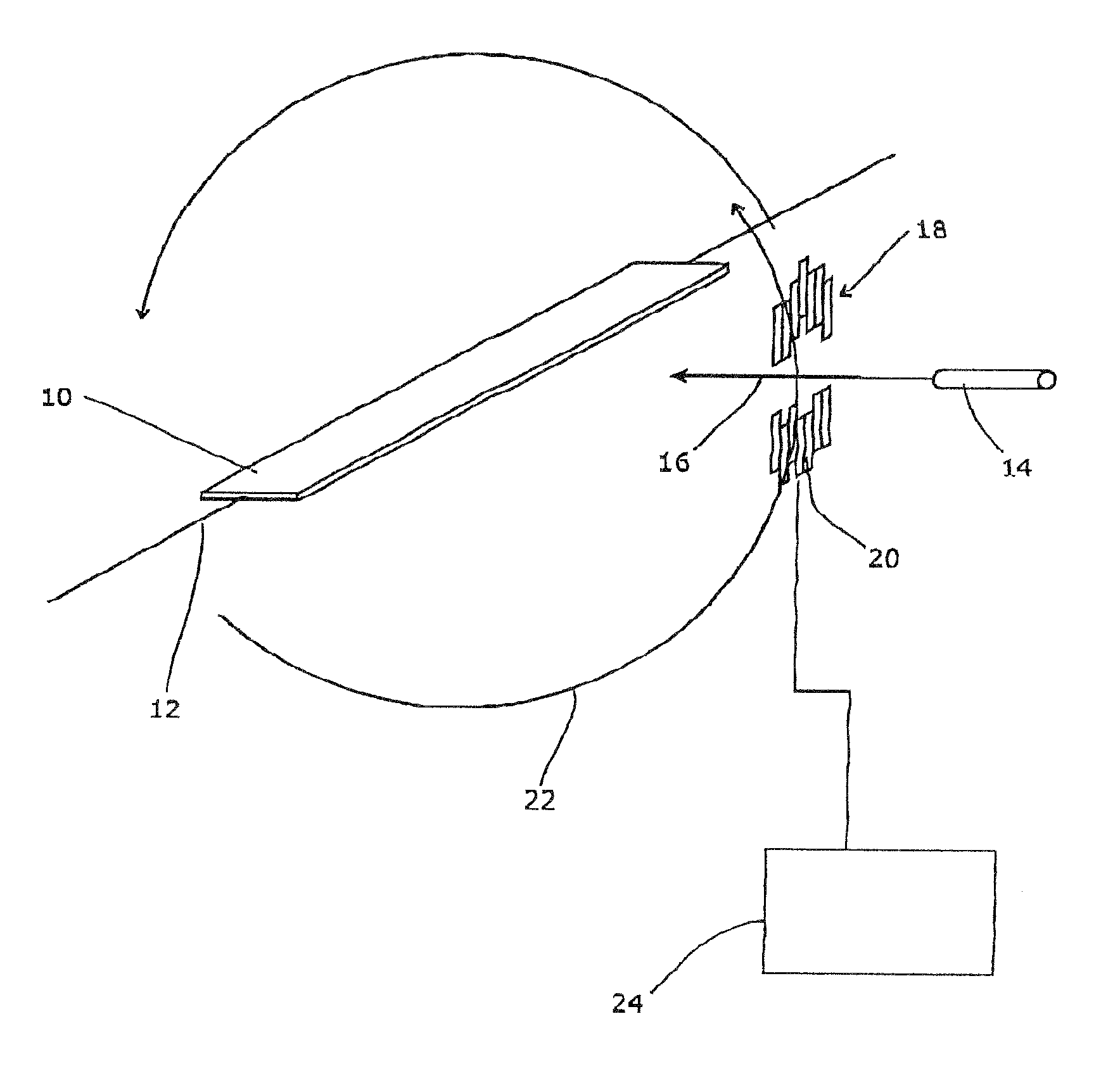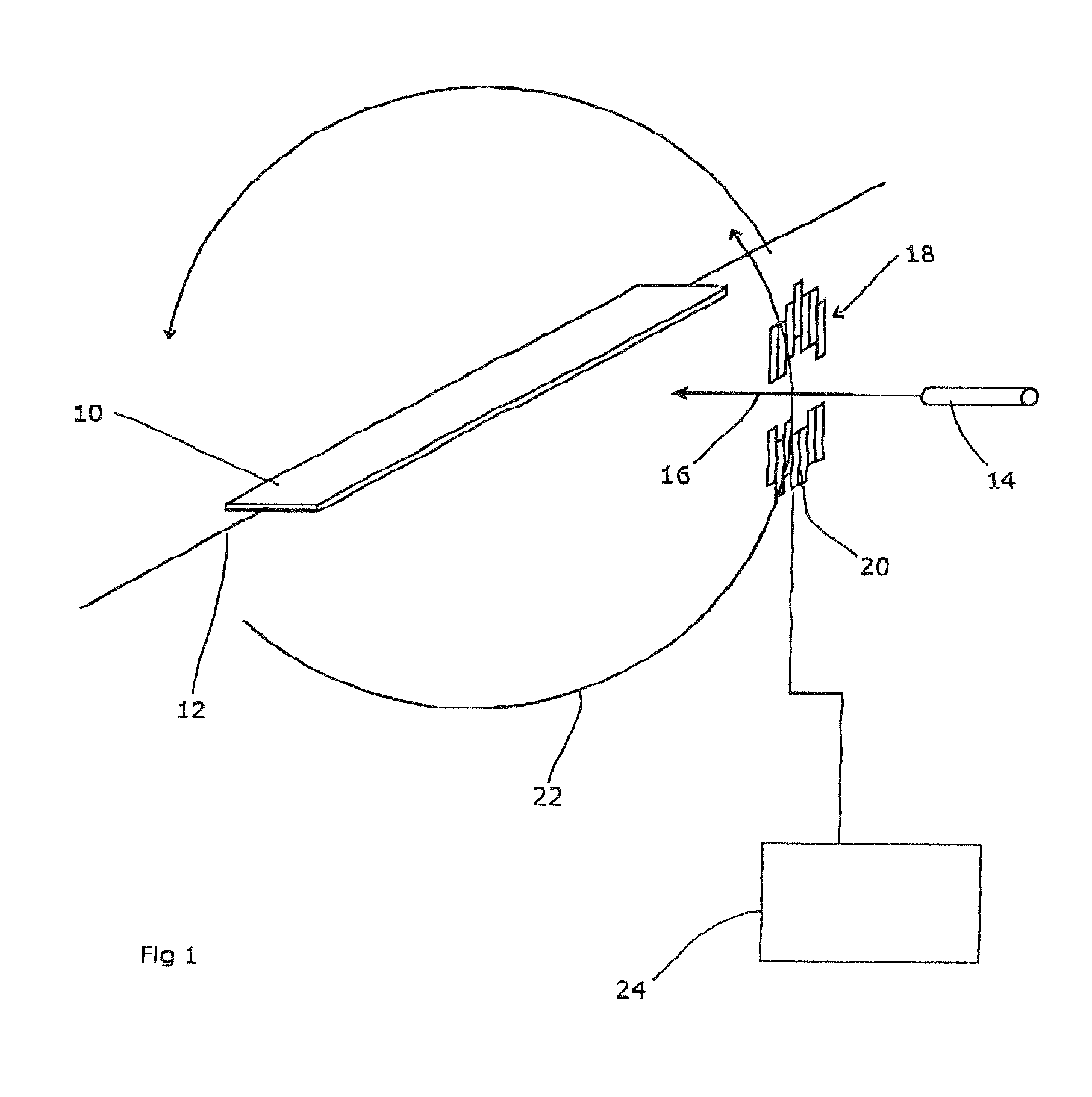Radiotherapeutic apparatus
a radiation therapy and apparatus technology, applied in the field of radiotherapy apparatus, can solve the problems of inability to treat the patient, inability to meet the patient's needs, and inability to meet the patient's needs, and achieve the effect of long aperture length and efficient radiation delivery
- Summary
- Abstract
- Description
- Claims
- Application Information
AI Technical Summary
Benefits of technology
Problems solved by technology
Method used
Image
Examples
Embodiment Construction
[0026]FIG. 1 shows, in outline, the apparatus used by the present invention. A patient support 10 is provided that is moveable along a longitudinal axis 12. A source of radiation 14 is also provided, on a mount (not shown) that allows it to be rotated around the longitudinal axis 12. Thus, the longitudinal axis of the patient support and the rotational axis of the radiation source are aligned. The source is directed towards the axis 12, such that its beam 16 intersects with the axis.
[0027]A multi-leaf collimator (MLC) 18 is provided for the radiation source 14. The leaves 20 of the MLC are oriented perpendicular to the beam 16 and to the axis 12. Accordingly, the leaves are in line with the tangential direction of the source 14 along its rotary path. This therefore collimates the radiation beam from a cone to what can be considered as a plurality of fan beams whose included angle is continuously variable. A computational means 24 is also provided for calculating leaf positions for t...
PUM
 Login to View More
Login to View More Abstract
Description
Claims
Application Information
 Login to View More
Login to View More - R&D
- Intellectual Property
- Life Sciences
- Materials
- Tech Scout
- Unparalleled Data Quality
- Higher Quality Content
- 60% Fewer Hallucinations
Browse by: Latest US Patents, China's latest patents, Technical Efficacy Thesaurus, Application Domain, Technology Topic, Popular Technical Reports.
© 2025 PatSnap. All rights reserved.Legal|Privacy policy|Modern Slavery Act Transparency Statement|Sitemap|About US| Contact US: help@patsnap.com


